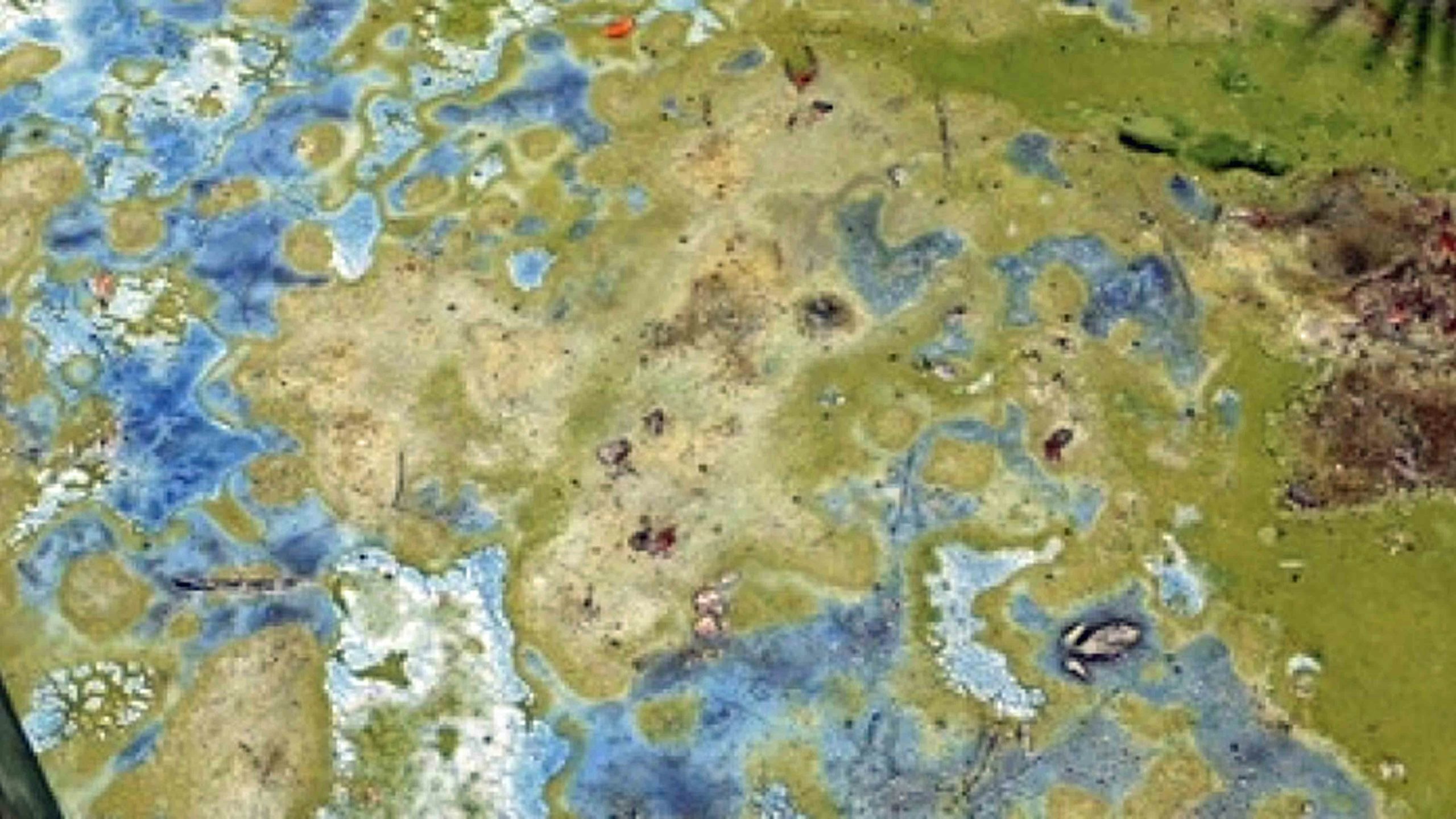There’s something dangerous in the water.
In lakes and reservoirs around the state, a harmful plant is lurking near the shore – one that poses a deadly threat to pets and livestock, and can cause serious illness for people.
It’s called a harmful cyanobacterial bloom (HCB) — a bluish-green algae that grows near the surface of calm water bodies, and right now it’s blooming in all corners of Wyoming.
From the Buffalo Bill Reservoir near Cody to the West Granite Springs Reservoir near Cheyenne; from the Keyhole Reservoir near Sundance, to the Woodruff Narrows Reservoir near Evanston — seventeen locations around the state have reported HCBs.
“Cyanobacteria are naturally occurring photosynthetic organisms that play an important role as primary producers in the ecosystem,” said Kelsee Hurshman, HCB Coordinator with the Wyoming Department of Environmental Quality. “Cyanobacteria multiply rapidly with sunlight, warm temperatures, and nutrient abundance.”
When the concentrations of cyanotoxins pose a risk to people or animals using water in affected regions, the Wyoming Department of Health issues advisories so people — and pets — can stay safe.
“In humans, when they come into contact with the contaminated water, it can act more as an irritant,” said Courtney Tillman, an epidemiologist with the Wyoming Department of Health. “If they drink contaminated water, they can get pain, nausea, vomiting, diarrhea, headache from neurological symptoms, such as muscle weakness or dizziness, and in severe cases, liver damage occurs as well.”
But for pets, even limited exposure to the toxic algae can be fatal, according to Dr. Hallie Hasel, the Wyoming State Veterinarian.
“Even if they would just maybe go for a minor swim or walk into the water, that is enough exposure to actually kill an animal,” she said.
According to Tillman, symptoms to look for in pets and livestock that may have been exposed to the toxins can include excessive salivation, vomiting, and staggered walking — they can even have difficulty breathing, and have convulsions. She noted that exposure to the harmful cyanobacterial bloom can ultimately result in liver failure for animals.
“Animals can actually die pretty quickly after an exposure to cyanotoxins,” she notes.
And sadly, there is no treatment or cure to counteract exposure to HCBs.
“The treatment is mostly supportive care,” Tillman explains. “There’s no antidote for the toxins.” Hurshman said reports of HCBs have increased dramatically in the last five years.“
They have become more prominent with warmer temperatures,” she said, “in addition to additional nutrients in the reservoirs from runoff. Nitrogen and phosphorus are nutrients that cyanobacteria thrive in, as well as warm temperatures and sunlight.”
Hurshman said the nitrogen and phosphorus that feed cyanobacteria can be from fertilizer as well as other pollutants, such as manure and other substances contained in runoff.
To protect yourself, your family, and your pets, Dr. Hasel urges people to be on the lookout around large bodies of water.
“You essentially need to watch for any kind of algae or growth along the edges of wherever you’re at, whether it’s a lake or a pond or a body of water that doesn’t have a lot of movement to it typically,” she said.
But Dr. Hasel pointed out that not all algae is harmful.
“You need to stay up-to-date on areas that have been declared harmful for Wyoming,” she said referring residents to the Department of Environmental Quality’s page that details HCB blooms that have been reported.





